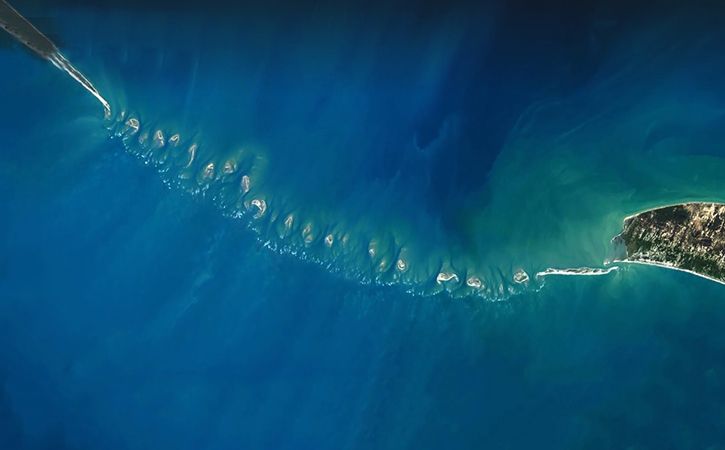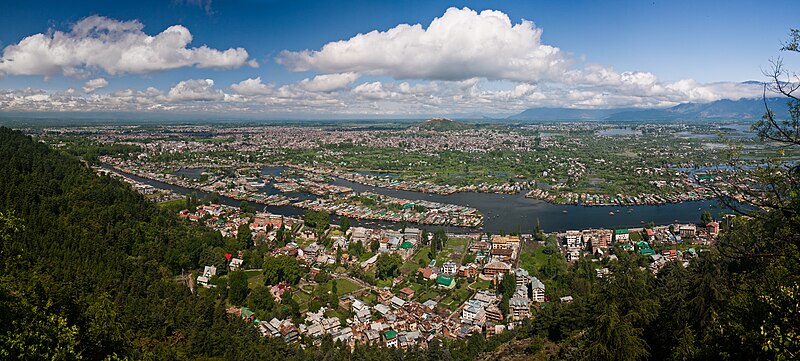1 Ram- Setu
Historical mentions and etymology
The ancient Indian Sanskrit epic Ramayana (7th century BCE to 3rd century CE) written by Valmiki mentions a bridge. constructed by god Ram through his Vanara (ape-men) army to reach Lanka and rescue his wife Sita from the Rakshasa king, Ravana. The location of the Lanka of the Ramayana has been widely interpreted as being present-day Sri Lanka making this stretch of land Nala's or Rama's bridge. Analysis of several of the older Ramayana versions by scholars for evidence of historicity have led to the identification of Lankapura no further south than the Godavari River. These are based on geographical, botanical, and folkloristic evidences as no archaeological evidence has been found. Scholars differ on the possible geography of the Ramayana but several suggestions since the work of H.D. Sankalia locate the Lanka of the epic somewhere in the eastern part of present day Madhya Pradesh.
The western world first encountered it in Ibn Khordadbeh's Book of Roads and Kingdoms (c. 850), in which he refers to it as Set Bandhai or Bridge of the Sea. Some early Islamic sources refer to a mountain in Sri Lanka as Adam's Peak (where Adam supposedly fell to earth). The sources describe Adam as crossing from Sri Lanka to India via the bridge after his expulsion from the Garden of Eden, leading to the name of Adam's Bridge. Alberuni (c. 1030) was probably the first to describe it in such a manner. A British cartographer in 1804 prepared the earliest map that calls this area by the name Adam's bridge.
The word Kashmir was derived from the ancient Sanskrit language and was referred to as káśmīra. The Nilamata Purana describes the valley's origin from the waters, a lake called Sati-saras. A popular local etymology of Kashmira is that it is land desiccated from water.
Geologists agree that the Valley was formerly a lake, and the lake drained through the gap of Baramulla (Varahamula)] which matches with the Hindu legends.
An alternative etymology derives the name from the name of the Vedic sage Kashyapa who is believed to have settled people in this land. Accordingly, Kashmir would be derived from either kashyapa-mir (Kashyapa's Lake) or kashyapa-meru (Kashyapa's Mountain).
The word has been referenced to in a Hindu scripture mantra worshipping the Hindu goddess Sharada and is mentioned to have resided in the land of kashmira, or which might have been a reference to the Sharada Peeth.
The Ancient Greeks called the region Kasperia, which has been identified with Kaspapyros of Hecataeus of Miletus and Kaspatyros of Herodotus (3.102, 4.44). Kashmir is also believed to be the country meant by Ptolemys Kaspeiria. The earliest text which directly mentions the name Kashmir is in Ashtadhyayi written by the Sanskrit grammarian Pāṇini during the 5th century BC. Pāṇini called the people of Kashmir Kashmirikas. Some other early references to Kashmir can also be found in Mahabharata in Sabha Parva and in puranas like Matsya Purana, Vayu Purana, Padma Purana and Vishnu Purana and Vishnudharmottara Purana.
Huientsang the Buddhist scholar and Chinese traveller, called Kashmir kia-shi-milo, while some other Chinese accounts referred to Kashmir as ki-pin (or Chipin or Jipin) and ache-pin.
Cashmeer is an archaic spelling of modern Kashmir, and in some countries it is still spelled this way. Kashmir is called Cachemire in French, Cachemira in Spanish, Caxemira in Portuguese, Caixmir in Catalan, Casmiria in Latin, Cașmir in Romanian, and Cashmir in Occitan.
In the Kashmiri language, Kashmir itself is known as Kasheer



Comments